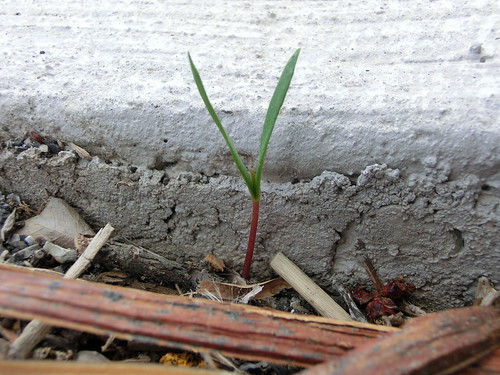Guest blogger: Reyna Matties
Urbanization displaces and degrades ecosystems that are critical for humans, animals, and plants. Sustainable urban development has become a priority in the challenge to re-design our ageing infrastructure. Working to coexist peacefully with the surrounding environment will increase sustainability. As a graduate student of Biology at McMaster University, I am studying the applied ecology and hydrology of a parking lot system (Lot M). Ancaster Creek, a rare cold-water ecosystem, runs along Lot M and is part of an essential wildlife corridor for native species such as salmon, turtle, and deer. Together with Dr. Susan Dudley, I am working to retrofit the stormwater management of the system to minimize the impact of contaminants and runoff into the creek.
One method of achieving this goal is through increasing and restoring the land next to the creek. This is called a riparian buffer, which protects the system by providing habitat for animals, increasing stormwater infiltration, and allowing plants and soil to break down and store contaminants.
Urban riparian buffers risk degradation from surrounding development. Ancaster Creek runs 34km from Hamilton's escarpment in the south, towards Lake Ontario in the north. In 1968, when McMaster University created Lot M, riparian buffer importance was not yet fully understood. The parking lot design left a small 10 metre buffer and prioritized a fast removal of stormwater. Warm, contaminated water flowed directly into the creek. Advocacy and partnerships have created awareness and an opportunity for restoration and retrofitting. Partial mitigation of parking lot effects on Ancaster Creek has begun in 2014. McMaster widened the creek's riparian buffer to 30m. Native species were planted, and turtle habitat was created.
Green Infrastructure works to build with nature in urban environments. Examples include a rain garden, riparian buffer, green roof, or bioswale. Stormwater quality and quantity can be improved at Lot M by implementing these designs . I am researching three hydrology and ecology related questions to guide my design and construction of a trial bioswale:
- How does soil moisture and salinity (road salt) vary on the new riparian buffer?
- How does the buffer soil salinity impact plant growth on the buffer?
- How does runoff vary over the parking lot area?
The public nature of the parking lot provides the opportunity for me to promote ecosystem restoration and sustainability. I do educational hikes, design interpretive signage, and provide content to courses. My research will advance restoration science in an urban context. McMaster University can use the research findings for adaptive management and future retrofits to Lot M.

Comments